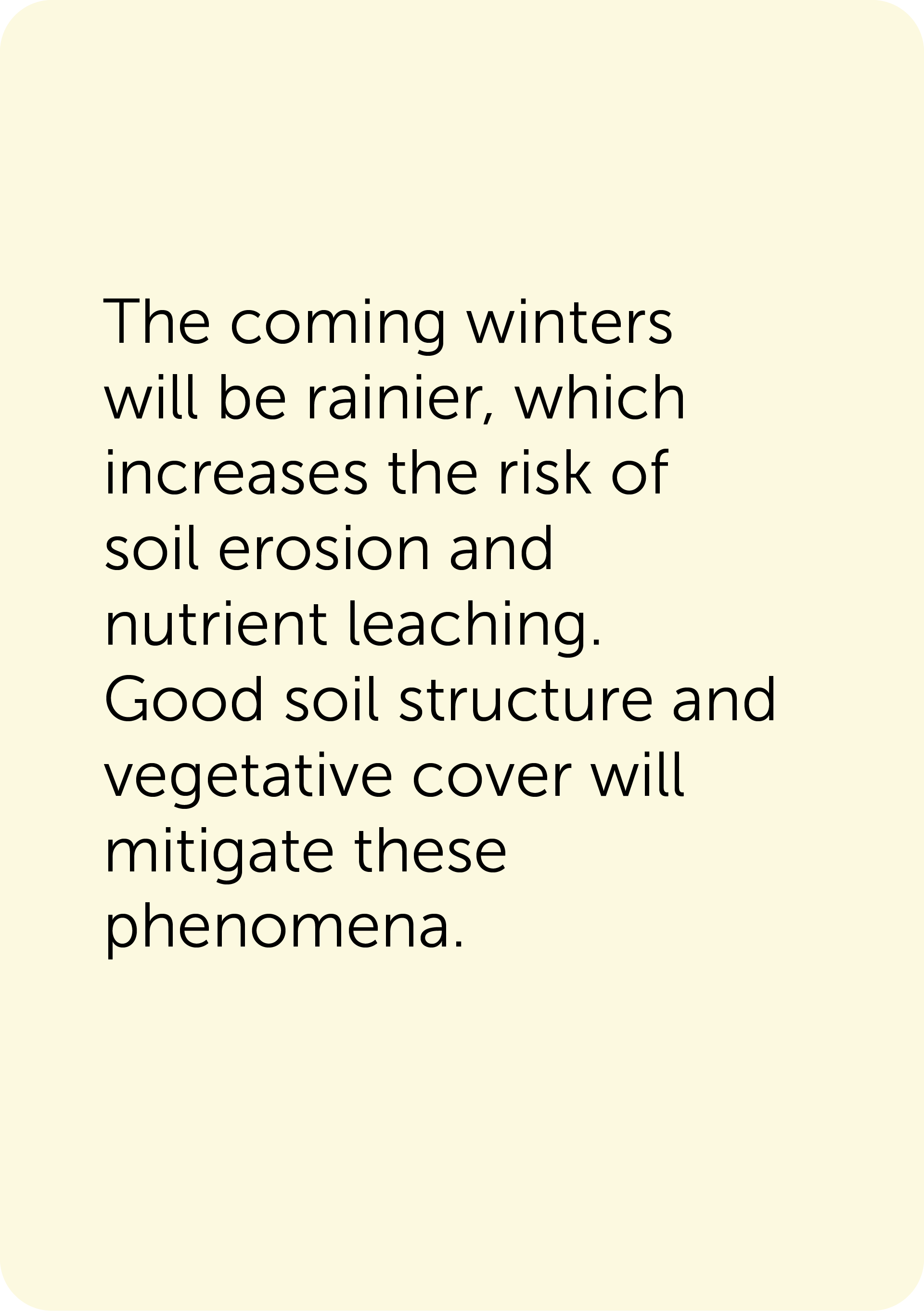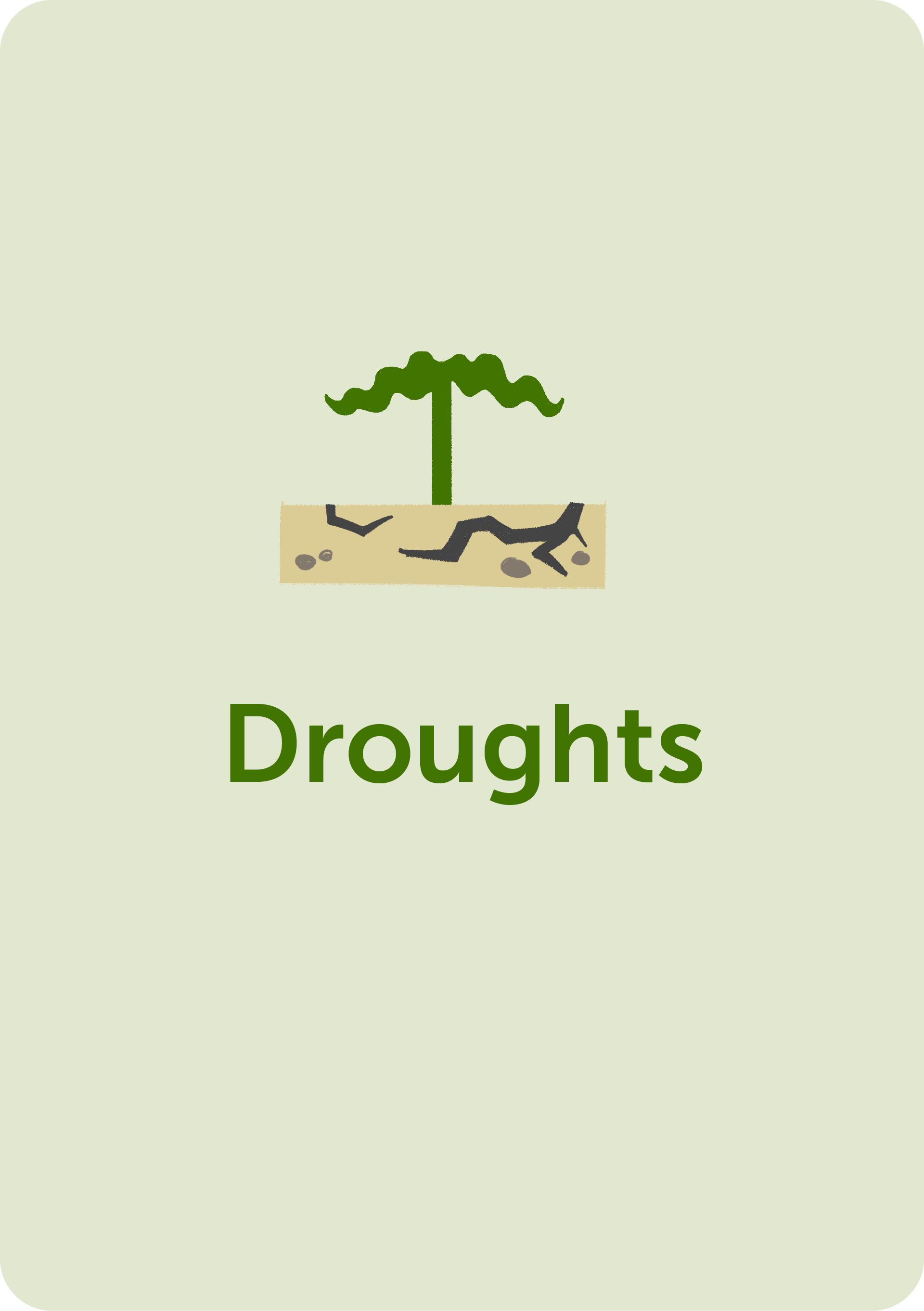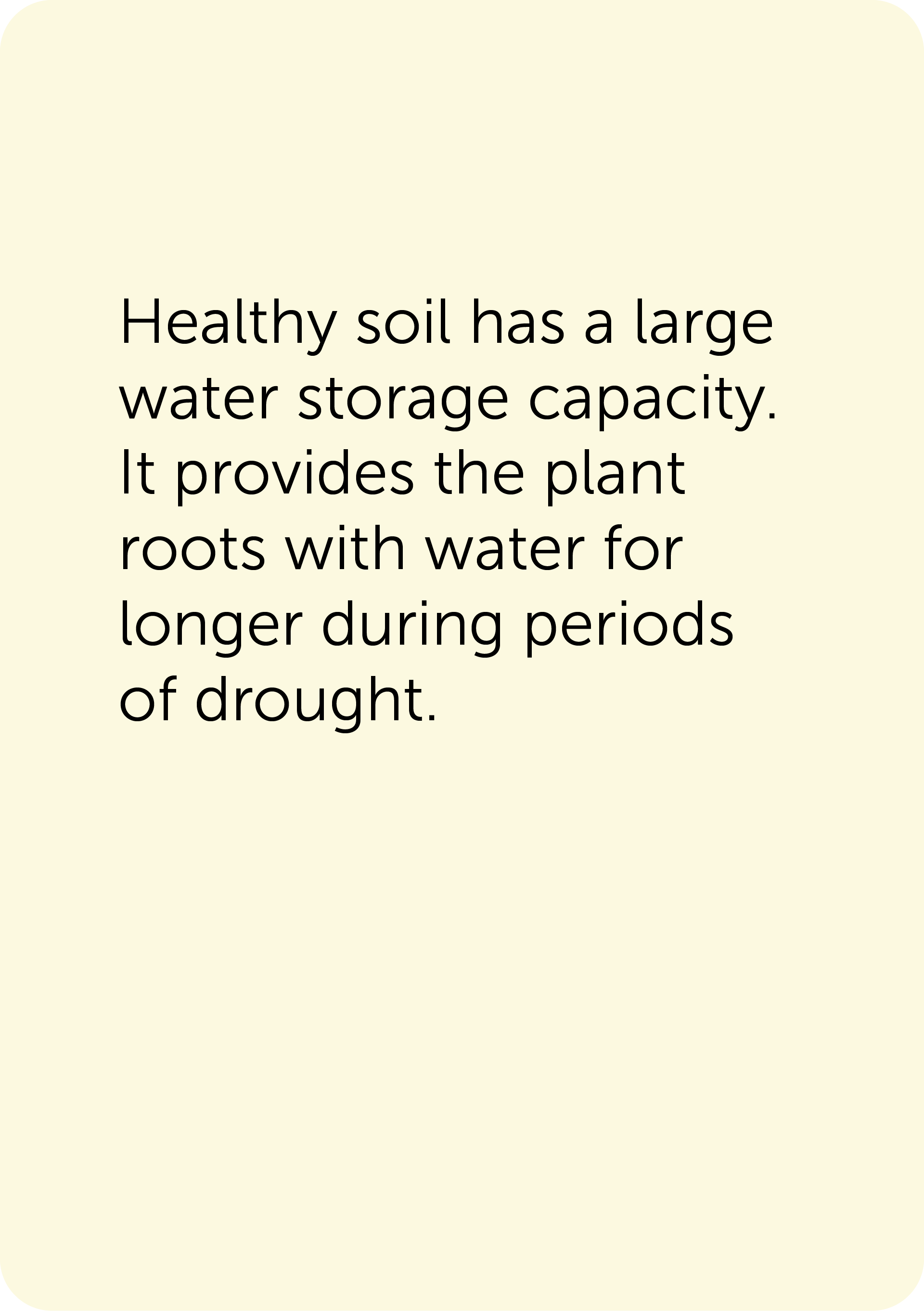You must log in or register to do the quizzes, complete the course and receive a certificate.
3.2. How can we safeguard the harvests of tomorrow?
The aforementioned environmental issues also affect the economy and society as a whole. If you look at the effects of regenerative farming from the perspective of farms and other food chain companies, there are also financial benefits to be gained. Let’s look at some examples of how regenerative farming can help alleviate the economic distress of food chain operators.
Let’s hear from our farmers again. Watch the video to see how Piia and Petri Jokela have benefited from regenerative farming on their farm in Nurmijärvi.
When you listen to farmers who have begun transitioning to regenerative farming, the message is clear: one of the most important reasons for taking up regenerative farming is an economic one. Regenerative farming methods lead to more reliable harvests.
Regenerative farming leads to greater resilience
Resilience is a word that often comes up in connection with regenerative farming, that is, the ability to adapt to or withstand changes. Resilience is an important element of a regenerative future. It means the ability of a specific ecosystem, such as a field, to withstand and recover from disruptions. A resilient ecosystem may even become stronger after experiencing a disruption.
It is not only fields that require resilience, but also farmers and society as a whole. For farmers, this primarily means crop security. For food chain companies, it is delivery reliability and for society it means security of supply.
How many harvests do we have left?
In the headlines, you may have run into claims that humanity only has 60 harvests left. This would mean that a global hunger crisis is just decades away. Such claims are most likely exaggerated. However, soil erosion and poor soil health are undeniable problems in our society.
Soil erosion rates have been found to vary globally. Daniel Evans and his colleagues have conducted a major study on the lifespan of soil. The researchers base their estimates on the amount of wear that can be observed in the soil’s valuable and nutrient-rich surface layer. The study indicates that 16% of the arable land that is actively cultivated using conventional farming methods has a lifespan of less than 100 years, 50% has more than 1,000 years and the rest has more than 5,000 years. It is impossible to determine the remaining number of harvests globally, as soil quality and management methods vary considerably.
Yet it is concerning how quickly our soil is getting depleted. Researchers say that, in order to protect cultivatable soil and food production, our prevailing agricultural practices must be improved. Regenerative farming methods, such as year-round plant cover and minimising tillage, will help to keep the soil healthy and prevent erosion. In the study, no fields under plant cover were given an estimated lifespan of less than 100 years.
Source: Daniel Evans et al. (2020). Soil lifespans and how they can be extended by land use and management change.
Climate change is not a future scenario or threat – it is already affecting us. Although minor changes have helped in some areas, farming conditions have already changed significantly in many places. So, even if we are ultimately aiming to mitigate climate change, we also need to find ways of coping with changing conditions.
In the fields, climate changecan be seen, for example, in an extended growing season. It therefore brings new opportunities for farming as well, particularly in northern regions. However, the changes in growing conditions brought about by climate change will mainly make farming more difficult. Extreme weather phenomena such as heatwaves, droughts and heavy rains are increasing, and weather conditions are becoming more difficult to predict.
Here are some of the ways in which regenerative farming methods can help us to cope with changing conditions. Click to rotate the image.






Resilience is not just about fields, but about society as a whole. The benefits of regenerative farming at other stages in the food chain are reflected not only in the improved productivity and delivery reliability of producers, but also on a broader scale. Well-managed soil and contented farmers will safeguard future food production. And not just any food, but a broad range of healthy and locally produced food with a traceable origin and supply chain.
Diverse crop rotation is another regenerative farming method that will also improve crop security. This will benefit not only the soil and farmers, but also the entire food chain. And when production isn’t centred around a single crop, farming will also be more financially stable. Having a broad range of crops will help to balance out workloads at peak times and reduce financial risks for farmers.
Ensuring that the soil is healthy also ensures that it will remain productive for future generations. In fact, regenerative farming is a long-term activity. When we leave our fields in better shape than when we got them, they will remain viable for cultivation in the future.
You can now mark this topic as completed and move on to the next topic.